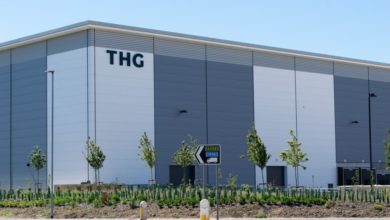Is Labour’s five-point plan a starting point to revive high streets?
After the Labour Party revealed its five-point plan to revitalise high streets, Tom McCarthy, external affairs adviser at the BRC tells us about the current state of high streets and explains how the Labour party’s plan can be a starting point for reviving high streets

Can you tell me about yourself and your experience in the retail sector?
I‘ve been working in retail for the past three years, having joined BRC the week before lockdown in March 2020. I work in our corporate affairs team, which has responsibility for running the BRC’s public affairs and communications work in England, Scotland (through the Scottish Retail Consortium), Wales (through the Welsh Retail Consortium), and Northern Ireland (through the Northern Ireland Retail Consortium). Over the past few years, we’ve been working to support members through COVID and the current challenging economic environment.
How do you evaluate the current state of the high street?
The high street is going through a period of transformation, driven by new technologies and evolving consumer habits. This has been taking place over the last decade or so with the rise of online and mobile shopping and is leading to new, higher-skilled jobs in the industry. Retailers have, of course, been investing in new technologies and new ways of delivering for their customers.The channel shift has led to an oversupply of retail space on high streets and in town and city centres, and we have seen some shops close. The BRC’s latest Vacancy Monitor, for Q4 2022, found that the overall vacancy rate in GB was 13.8%; this represents a 0.1% improvement over Q3 2022 and a 0.6% improvement compared to Q4 2021. However, vacancy rates have not yet recovered to pre-pandemic levels.
That said, the high street remains a vital part of the social fabric of communities across the country. We still spend £3 out of every £4 in shops, which will continue to provide local convenience and choice, while high streets will continue to provide a place to mingle and linger. Indeed, shops are evolving to offer experiences, service fulfilment, and act as brand showrooms, helping retailers connect with customers in new ways.
Ultimately, we need to start thinking of high streets as places that include retail but aren’t solely about retail. Thinking of them instead as places with more housing, care in the community, flexible workspaces, leisure, hospitality, and culture—alongside retail— And focusing on the unique characteristics, histories, and selling points of the communities they serve to create exciting and innovative offerings that give people more reason to visit and spend time on their high streets.
Do you think Labour’s newly-launched 5-point plan would be a viable way to reinvigorate high streets?
It’s always welcome to see new thinking on how to support high streets. Their successful transformation will require effective national policies and support for local leaders and councils to develop and implement plans to help their high streets thrive.
Labour’s plan certainly represents a starting point, setting out plans to tackle anti-social behaviour, bring empty premises back into use, and support businesses as they look to invest in more sustainable improvements to their buildings and improve energy efficiency.
Labour has set out that they would cut business rates for small businesses, but it is crucial that any reform to the rates system brings the burden down for retailers of all sizes and recognises that the majority of retailers sell both in shops and online, viewing these two channels as complimentary; the distinction between the two is no longer relevant, really.
A comprehensive strategy to support high streets should also include elements to ensure there is good, affordable public transport and car parking, robust digital infrastructure, and investment in the public realm. Moreover, the successful transformation of high streets will depend on effective partnerships between national and local governments, businesses, and residents to allow for the development and implementation of plans and strategies for local high streets.
Why has footfall yet to recover to pre-pandemic levels?
As of March this year, footfall on high streets remains 11.5% down on pre-pandemic levels. In the three months to March, however, we had seen some strong growth in terms of high street footfall, rising by 14.5%. With the rising cost of living, some shoppers appear to be holding back on shopping trips or taking them less frequently. Of course, we’ve also had this significant change in the way we work, which has impacted some high streets and shopping destinations in large urban areas, although some high streets in secondary locations will have seen footfall rise due to more people working from home more frequently.
How would you like to see either the Labour government or the current Conservative government tackle business rates, and do you see this as the main issue that needs to be addressed?
There have been some welcome reforms to the business rates system since the government launched its Fundamental Review in 2021, including the move to three-yearly revaluations, the scrapping of downward transitional relief, and reliefs for improvements to and green investments in properties. The first two have gone some way to making the rates system more reflective of economic conditions and removing an additional cost burden from those ratepayers seeing decreases in property values following a revaluation.
What remains unaddressed, however, is the overall tax burden placed on retail by business rates. The industry accounts for 5% of the economy but pays over one-fifth of business rates. We surveyed retailers on the impact business rates will have on their businesses in 2021, and 85% reported that rates are either ‘extremely’ or ‘very important’ when considering whether to open or close a store. More than this, in two-thirds of store closures in the preceding two years (i.e., from 2019 to 2021), business rates had a material impact on the decision-making process.
So, we really need to see the level of business rates brought down in order to support thriving high streets, make the economics of shop-based retailing more sustainable, and encourage new businesses to move into premises. The priority here is to deliver a cut to the multiplier, which has increased by around 50% since 1990, back to its original level of 34.8%.
If a government was to implement the desired changes how long do you think it would take for high streets to thrive again?
It will likely differ from location to location, and it won’t be overnight – so it’s important that there’s a strong policy background which supports communities in developing plans for their high streets and town centres and allows them to bring them to fruition more quickly.









